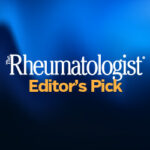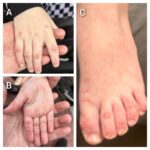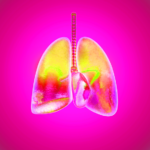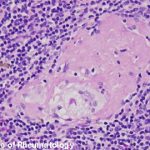Advanced imaging technique allows physicians to detect deposition of monosodium urate crystals not apparent in physical exams and better diagnose gout
Search results for: computed tomography

Tips from a Cardiothoracic Radiologist: Interstitial Lung Disease & Radiology for the Rheumatologist
Due to its array of radiographic patterns, interstitial lung disease can be challenging to diagnose and treat. Adam Guttentag, MD, a cardiothoracic radiologist, shared tips for ordering and interpreting chest computed tomography.

Another Way: RheumMadness 2022 DECT in Gout Scouting Report
Research has found dual-energy computed tomography (DECT) may be a non-invasive and cost-effective option to help rheumatologists more accurately diagnose gout.

Gout, Imaging & Cardiovascular Disease: 2 Experts Discuss Challenging Patients & Advanced Imaging
Experts compare using ultrasound and dual-energy computed tomography (DECT) scan when diagnosing likely gout patients, and discuss the latest insights into the intersection between gout and cardiovascular disease.

Tracking Bone Deterioration in Patients with Ankylosing Spondylitis
Trabecular bone score and high-resolution peripheral quantitative computed tomography may be effective for evaluating bone impairment in patients ankylosing spondylitis (AS). Rheumatologists may be able to use these methods, complementary to dual-energy X-ray absorptiometry, to identify bone quality deterioration in AS patients.

Calcium Pyrophosphate Deposition Disease: The Great Mimic
CPPD is notoriously difficult to diagnose due to its diverse presentations & uncertain etiology. Recent advances have helped rheumatologists better understand its risk factors, classify, diagnose & treat the condition.

ACR Image Competition 2024 Results, Part 5
For the 2024 Image Competition, the ACR sought images with educational or remarkable manifestations representing a diverse range of pediatric patients with autoimmune, inflammatory, infectious and malignant drivers of rheumatic disease. Here, we showcase the winning images from North America. Patient Presentation A 3-year-old boy presented with a four-month history of rash and hand blisters….

Experts Discuss Guidelines for Interstitial Lung Disease in Systemic Autoimmune Rheumatic Disease
Over 50% of patients with systemic sclerosis (SSc) develop interstitial lung disease (ILD), and rheumatologists have long recognized this major cause of morbidity and mortality.1 Sindhu R. Johnson, MD, PhD, professor of medicine at the University of Toronto, Canada, and director of the Toronto Scleroderma Program, notes that more recent studies have increased our awareness…

Through Thick & Thin: Updates in Scleroderma
Pulmonary hypertension and Raynaud’s phenomenon are just some of the symptoms patients with systemic sclerosis (SSc) may experience. Here are insights into the diagnosis and management of SSc.

The Great Imitator: Updates on Sarcoidosis
Michelle Sharp, MD, MHS, shared insights into the complexities of sarcoidosis, describing how she evaluates, diagnoses and treats patients.
- 1
- 2
- 3
- …
- 24
- Next Page »